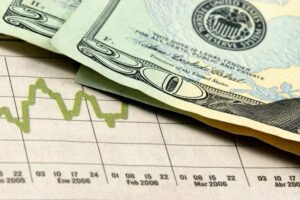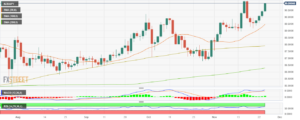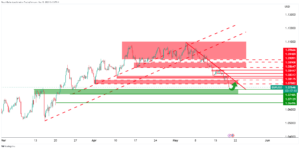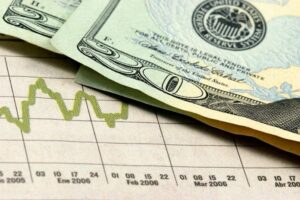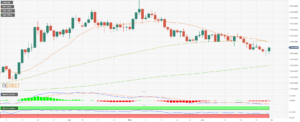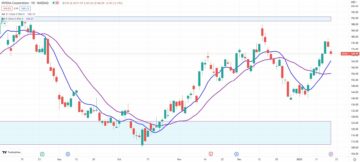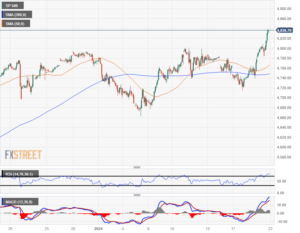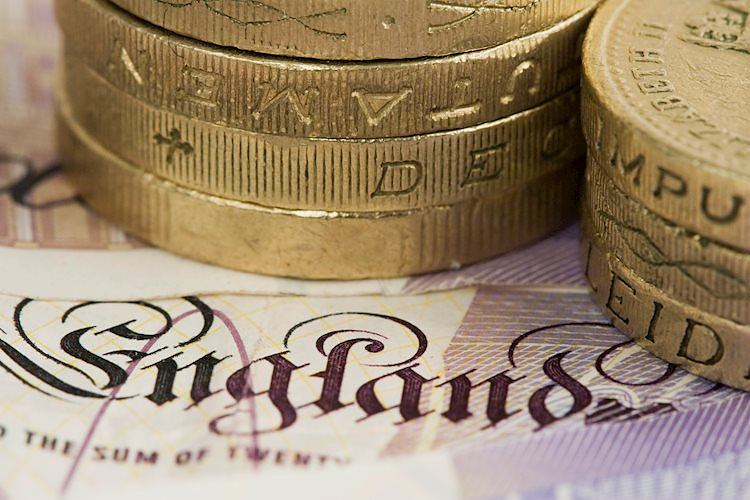
- Pound Sterling rebounds market sentiment turns bullish, UK factory data eyed.
- It is expected that the United Kingdom economy could avoid recession.
- UK’s GDP is seen growing in Q2 despite the aggressively restrictive monetary policy.
The Pound Sterling (GBP) extends upside swiftly as the market mood turns cheerful. The GBP/USD pair looks well-supported for now as investors hope that the British economy could avoid recession due to easing inflationary pressures and declining consumer spending. Domestically, Friday’s factory data and Q2 Gross Domestic Product (GDP) figures will be in focus.
Investors would be eager to know how effectively firms are handling the impact of higher interest rates by the Bank of England (BoE). Market participants anticipate that United Kingdom’s GDP grew in the April-June quarter despite aggressively tight monetary policy. Also, production activities remained on a recovery path, demonstrating resilience in the economy.
Daily Digest Market Movers: Pound Sterling rebounds as US CPI maintains a steady pace
- Pound Sterling jumps sharply to near 1.2800 as investors await factory data for June and Q2 GDP data, which will be published on Friday at 06:00 GMT.
- Per estimates, monthly GDP expanded by 0.2% in June against a contraction of 0.1%. Preliminary GDP data for the April-June quarter is seen as stagnant versus a nominal expansion of 0.1% recorded for Q1. Annual GDP is forecast to be expanding at a steady pace of 0.2%.
- According to consensus, Monthly Industrial Production expanded by 0.1% against a steep contraction of 0.6% recorded for May. Annually, the economic data is seen at -1.1%, against the former release of -2.3%.
- Meanwhile, Manufacturing Production grew at 0.2% in June versus a contraction by a similar figure in May. Annual data expanded by 0.3% against -1.2%.
- Preliminary consensus for United Kingdom factory data indicates a recovery despite aggressive policy tightening by the Bank of England.
- A recovery in the UK Manufacturing sector would ease recession fears but more interest rate hikes from the central bank will remain warranted.
- BoE policymakers cannot announce victory over inflation as the current UK Consumer Price Index (CPI) is almost four times the required rate of 2%. Therefore, further policy tightening cannot be ruled out.
- About the interest rate outlook, MUFG said that softening in the labor market and recent retail sales data showing slower consumer spending is “certainly strengthening the case for the BoE to possibly pause its tightening cycle,”
- It is expected that the promise made by UK PM Rishi Sunak of halving inflation by year-end when inflation was a little above 10% would be fulfilled as consumer spending loses resilience and hiring slows down.
- After UK factory data, investors will shift their focus toward the labor market data for July, which will be released on Tuesday.
- The risk profile turns cheerful as the United States Consumer Price Index (CPI) data for July remains in line with expectations.
- On Wednesday, the market mood remained sour after Moody’s downgraded small and mid-sized US banks. The credit-rating firm warned that it could downgrade America’s biggest lenders ahead.
- Monthly inflation continues to expand at a pace of 0.2%. Headline CPI rebounds t3.2% but remained lower than expectations of 3.3%. Core inflation decelerated marginally to 4.7% against the consensus of 4.8%.
- The US Dollar Index (DXY) drops as sticky inflation data would keep September’s monetary policy. unchanged.
- US 30-year mortgage rates rose sharply to 7.09% this week, the second-highest since 2001, demonstrating the impact of the US government downgrade.
Technical Analysis: Pound Sterling approaches 1.2800
Pound Sterling continues to remain well-supported above the round-level support of 1.2700. A power-pack action is anticipated from Cable as the US economy will report its inflation data. The asset continues to trade below the 20 and 50-period Exponential Moving Averages (EMAs), which keeps the short and medium-term trend bearish. A downside move below the four-day low around 1.2680 would elevate the downside pressure.
Pound Sterling FAQs
The Pound Sterling (GBP) is the oldest currency in the world (886 AD) and the official currency of the United Kingdom. It is the fourth most traded unit for foreign exchange (FX) in the world, accounting for 12% of all transactions, averaging $630 billion a day, according to 2022 data.
Its key trading pairs are GBP/USD, aka ‘Cable’, which accounts for 11% of FX, GBP/JPY, or the ‘Dragon’ as it is known by traders (3%), and EUR/GBP (2%). The Pound Sterling is issued by the Bank of England (BoE).
The single most important factor influencing the value of the Pound Sterling is monetary policy decided by the Bank of England. The BoE bases its decisions on whether it has achieved its primary goal of “price stability” – a steady inflation rate of around 2%. Its primary tool for achieving this is the adjustment of interest rates.
When inflation is too high, the BoE will try to rein it in by raising interest rates, making it more expensive for people and businesses to access credit. This is generally positive for GBP, as higher interest rates make the UK a more attractive place for global investors to park their money.
When inflation falls too low it is a sign economic growth is slowing. In this scenario, the BoE will consider lowering interest rates to cheapen credit so businesses will borrow more to invest in growth-generating projects.
Data releases gauge the health of the economy and can impact the value of the Pound Sterling. Indicators such as GDP, Manufacturing and Services PMIs, and employment can all influence the direction of the GBP.
A strong economy is good for Sterling. Not only does it attract more foreign investment but it may encourage the BoE to put up interest rates, which will directly strengthen GBP. Otherwise, if economic data is weak, the Pound Sterling is likely to fall.
Another significant data release for the Pound Sterling is the Trade Balance. This indicator measures the difference between what a country earns from its exports and what it spends on imports over a given period.
If a country produces highly sought-after exports, its currency will benefit purely from the extra demand created from foreign buyers seeking to purchase these goods. Therefore, a positive net Trade Balance strengthens a currency and vice versa for a negative balance.
- SEO Powered Content & PR Distribution. Get Amplified Today.
- PlatoData.Network Vertical Generative Ai. Empower Yourself. Access Here.
- PlatoAiStream. Web3 Intelligence. Knowledge Amplified. Access Here.
- PlatoESG. Automotive / EVs, Carbon, CleanTech, Energy, Environment, Solar, Waste Management. Access Here.
- BlockOffsets. Modernizing Environmental Offset Ownership. Access Here.
- Source: https://www.fxstreet.com/news/pound-sterling-rebounds-as-central-bank-could-announce-pause-sooner-202308100746
- :has
- :is
- :not
- $UP
- 1
- 2%
- 20
- 2001
- 2022
- 32
- 7
- a
- above
- access
- According
- Accounting
- Accounts
- achieved
- achieving
- Action
- activities
- activity
- Ad
- Adjustment
- After
- against
- aggressive
- ahead
- All
- All Transactions
- also
- analysis
- and
- Animate
- Announce
- annual
- Annually
- anticipate
- Anticipated
- approaches
- ARE
- around
- AS
- asset
- At
- attract
- attractive
- averaging
- avoid
- await
- Balance
- Bank
- Bank of England
- Bank of England (BOE)
- Banks
- BE
- bearish
- below
- benefit
- between
- Biggest
- Billion
- BoE
- borrow
- British
- Bullish
- businesses
- but
- buyers
- by
- cable
- CAN
- cannot
- case
- central
- Central Bank
- Consensus
- Consider
- consumer
- consumer price index
- content
- continues
- contraction
- Core
- core inflation
- could
- country
- CPI
- created
- credit
- Currency
- Current
- cycle
- data
- day
- decided
- decisions
- Declining
- Demand
- demonstrating
- Despite
- difference
- Digest
- direction
- directly
- does
- Dollar
- dollar index
- Domestic
- domestically
- down
- Downgrade
- Downgraded
- downside
- Drops
- due
- Dxy
- eager
- ease
- easing
- Economic
- Economic growth
- economy
- effectively
- ELEVATE
- employment
- encourage
- ends
- England
- estimates
- exchange
- Expand
- expanded
- expanding
- expansion
- expectations
- expected
- expensive
- exponential
- exports
- extends
- extra
- factor
- factory
- Fall
- Falls
- FAQ
- fears
- Figure
- Figures
- Firm
- firms
- Focus
- For
- Forecast
- foreign
- foreign exchange
- foreign investment
- Former
- four
- Fourth
- Friday
- from
- further
- FX
- gauge
- GBP
- GBP/USD
- GDP
- generally
- given
- Global
- GMT
- goal
- good
- goods
- Government
- gross
- Growing
- Growth
- Halving
- Handling
- headline
- Health
- High
- higher
- highly
- Hikes
- Hiring
- hope
- How
- HTTPS
- if
- Impact
- important
- imports
- in
- index
- indicates
- Indicator
- Indicators
- industrial
- Industrial Production
- inflation
- inflation rate
- Inflationary
- Inflationary pressures
- influence
- influencing
- interest
- INTEREST RATE
- INTEREST RATE HIKES
- Interest Rates
- Invest
- investment
- Investors
- Issued
- IT
- ITS
- jpg
- July
- jumps
- june
- Key
- Kingdom
- Know
- known
- labor
- labor market
- lenders
- likely
- Line
- little
- LOOKS
- Loses
- Low
- lower
- lowering
- made
- maintains
- make
- Making
- manufacturing
- Manufacturing sector
- Market
- Market Data
- market sentiment
- May..
- measures
- module
- Monetary
- Monetary Policy
- money
- monthly
- mood
- more
- Mortgage
- most
- move
- Movers
- moving
- moving averages
- MUFG
- Near
- negative
- net
- now
- of
- official
- oldest
- on
- only
- or
- otherwise
- out
- Outlook
- over
- Pace
- pairs
- Park
- participants
- path
- pause
- People
- period
- Place
- plato
- Plato Data Intelligence
- PlatoData
- policy
- policymakers
- positive
- possibly
- pound
- pound sterling
- pressure
- price
- primary
- produces
- Product
- Production
- Profile
- projects
- promise
- published
- purchase
- purely
- put
- Q1
- Q2
- Quarter
- raising
- Rate
- rate hikes
- Rates
- recent
- recession
- recorded
- recovery
- release
- released
- Releases
- remain
- remained
- remains
- report
- required
- resilience
- Restrictive
- retail
- Retail Sales
- RISHI SUNAK
- Risk
- ROSE
- ruled
- Said
- sales
- scenario
- sector
- seeking
- seen
- sentiment
- Services
- shift
- Short
- showing
- sign
- significant
- similar
- since
- single
- Slowing
- slows
- small
- So
- Spending
- starts
- States
- steady
- sterling
- sticky
- Strengthen
- strengthening
- Strengthens
- strong
- such
- support
- swiftly
- than
- that
- The
- the UK
- the United Kingdom
- the world
- their
- therefore
- These
- this
- this week
- tightening
- times
- to
- too
- tool
- toward
- trade
- traded
- Traders
- Trading
- trading pairs
- Transactions
- Trend
- try
- Tuesday
- turns
- Uk
- UK GDP
- unit
- United
- United Kingdom
- United States
- Upside
- us
- US banks
- US Dollar
- US Dollar Index
- US economy
- us government
- value
- Versus
- vice
- victory
- was
- Wednesday
- week
- What
- when
- whether
- which
- will
- with
- world
- would
- zephyrnet




